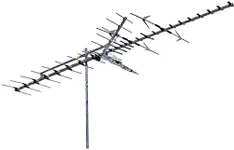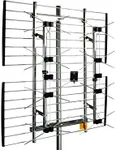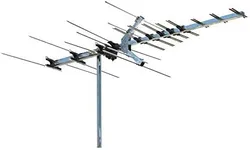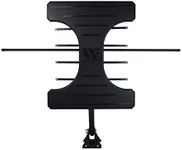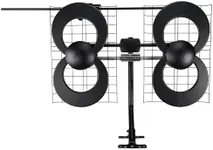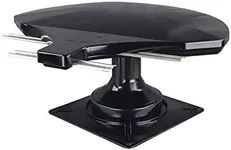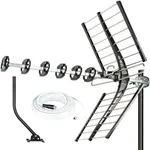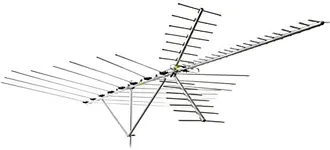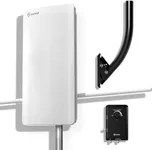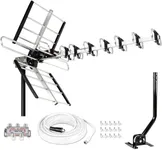Buying Guide for the Best Digital Tv Antennas
Choosing the right digital TV antenna can significantly enhance your viewing experience by providing access to a wide range of channels with clear reception. The key to selecting the best antenna for your needs is understanding the various specifications and how they relate to your specific situation. Here are the key specs to consider when choosing a digital TV antenna and how to navigate them to find the best fit for you.RangeThe range of a digital TV antenna indicates how far it can receive signals from broadcast towers. This is important because it determines the number of channels you can access. Antennas typically come in short-range (up to 30 miles), medium-range (30-50 miles), and long-range (50+ miles) categories. If you live in an urban area with broadcast towers nearby, a short-range antenna may suffice. For suburban areas, a medium-range antenna is often suitable. If you are in a rural area far from broadcast towers, a long-range antenna is necessary to ensure good reception.
Frequency BandsDigital TV antennas can receive signals on different frequency bands, mainly VHF (Very High Frequency) and UHF (Ultra High Frequency). VHF channels are typically channels 2-13, while UHF channels are 14-51. Some antennas are designed to receive both VHF and UHF signals, while others may only receive one type. It's important to know which channels are broadcast in your area and choose an antenna that can receive those frequencies. If you want to access a wide range of channels, a dual-band antenna that supports both VHF and UHF is a good choice.
Indoor vs. OutdoorDigital TV antennas come in indoor and outdoor models. Indoor antennas are compact and easy to install, making them ideal for apartments or homes with limited space. However, they may have limited range and be more susceptible to interference. Outdoor antennas are larger and typically mounted on the roof or an exterior wall, providing better reception and a longer range. If you live in an area with strong signal strength, an indoor antenna may be sufficient. For areas with weaker signals or more obstructions, an outdoor antenna is recommended.
Amplified vs. Non-AmplifiedAmplified antennas have a built-in signal booster that enhances the reception of weak signals, which can be particularly useful in areas with poor signal strength or many obstructions. Non-amplified antennas do not have this feature and rely solely on their design to capture signals. If you live far from broadcast towers or in an area with many obstacles, an amplified antenna can help improve reception. In areas with strong signals, a non-amplified antenna may be sufficient and can avoid potential issues with signal overload.
Directional vs. Multi-DirectionalDirectional antennas are designed to receive signals from a specific direction, which can be useful if most of the broadcast towers are located in one area. Multi-directional antennas, on the other hand, can receive signals from multiple directions, making them ideal for areas where broadcast towers are spread out. If you know the direction of the broadcast towers relative to your location, a directional antenna can provide stronger reception. If the towers are scattered or you want to capture signals from various directions, a multi-directional antenna is a better choice.
